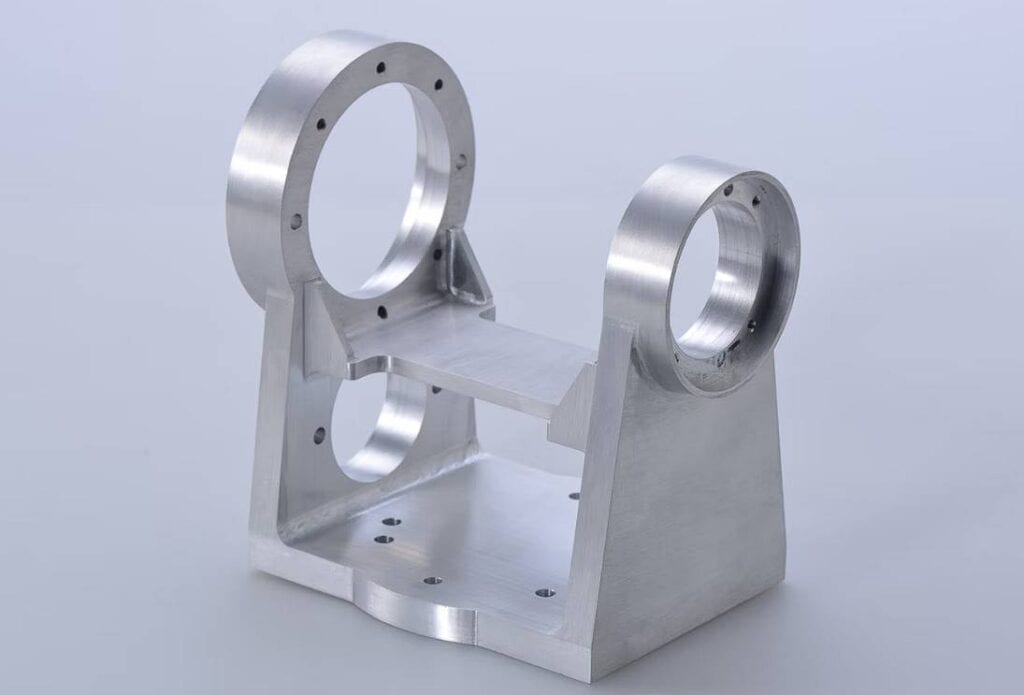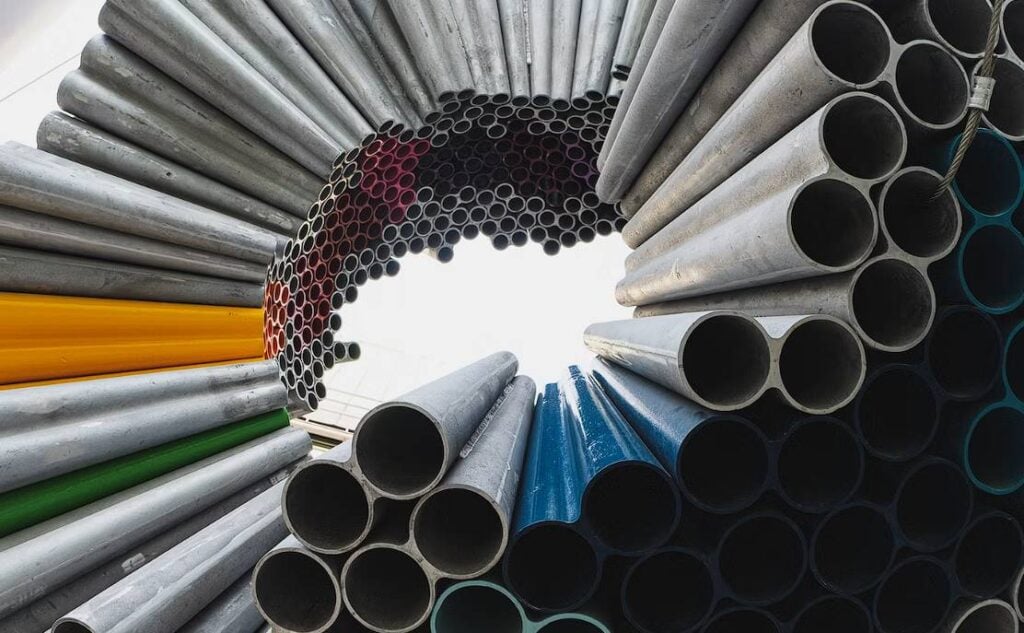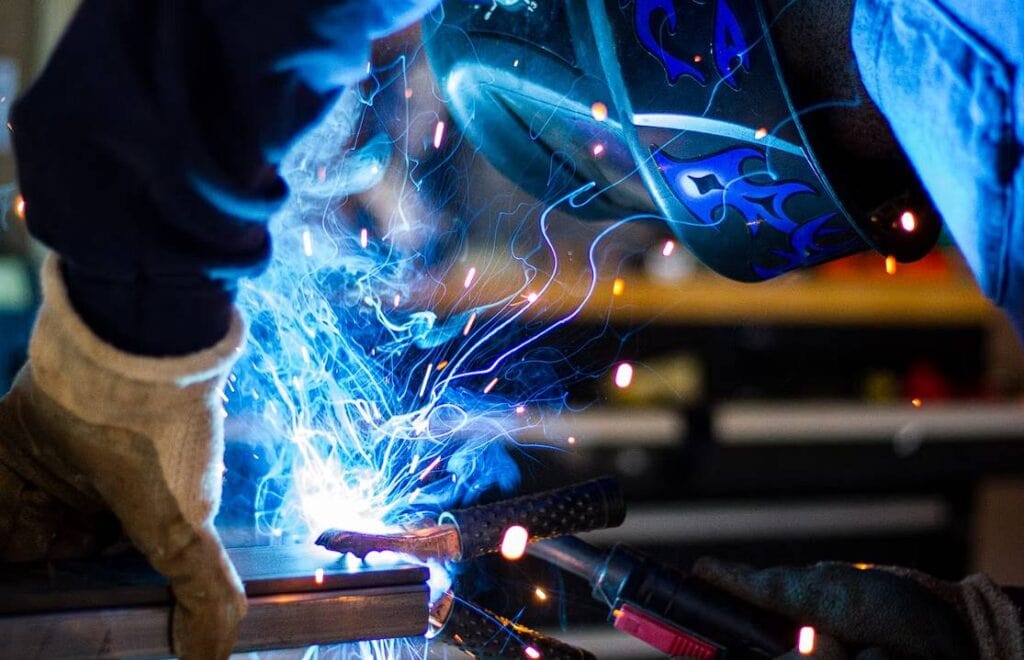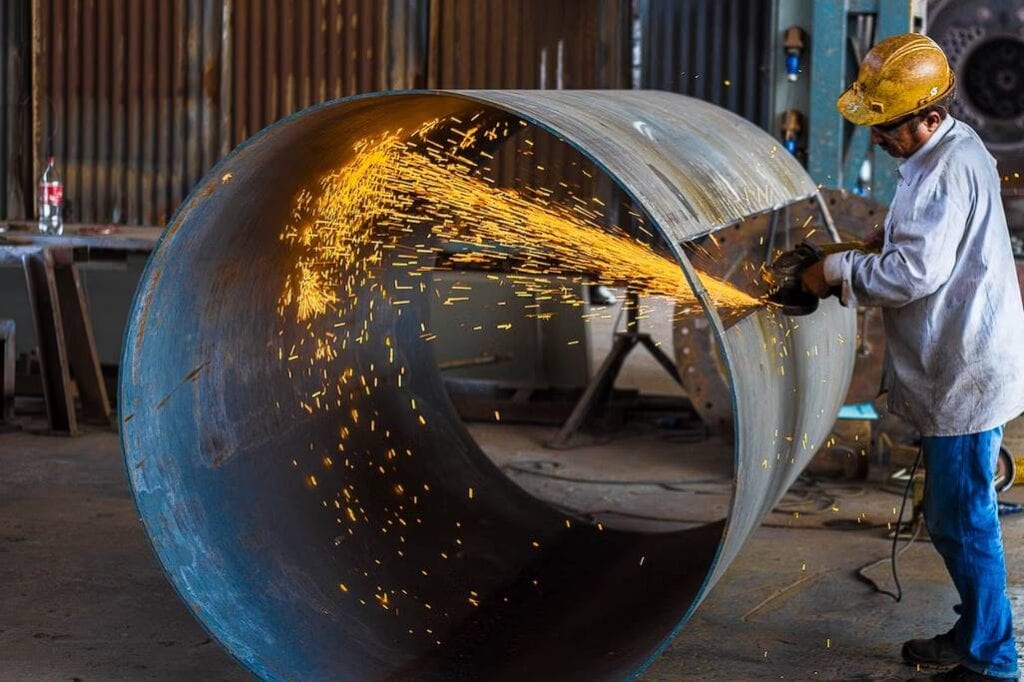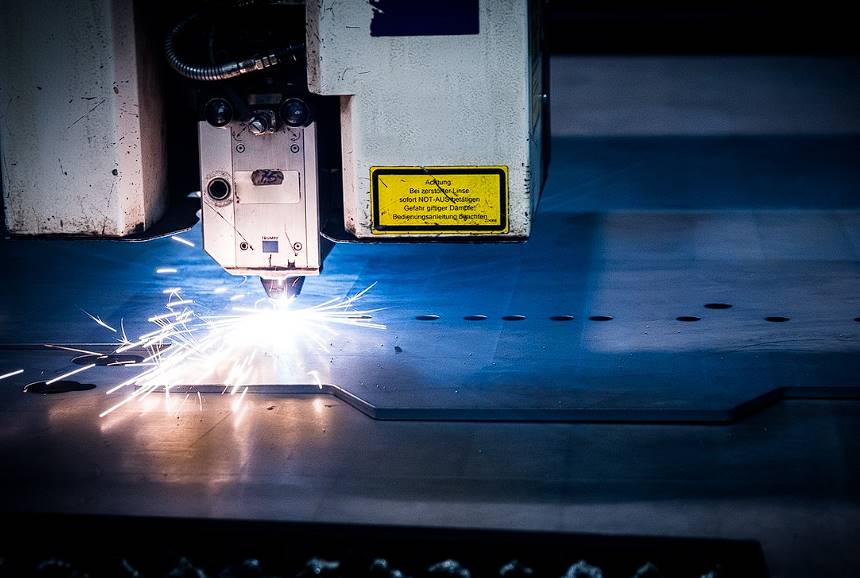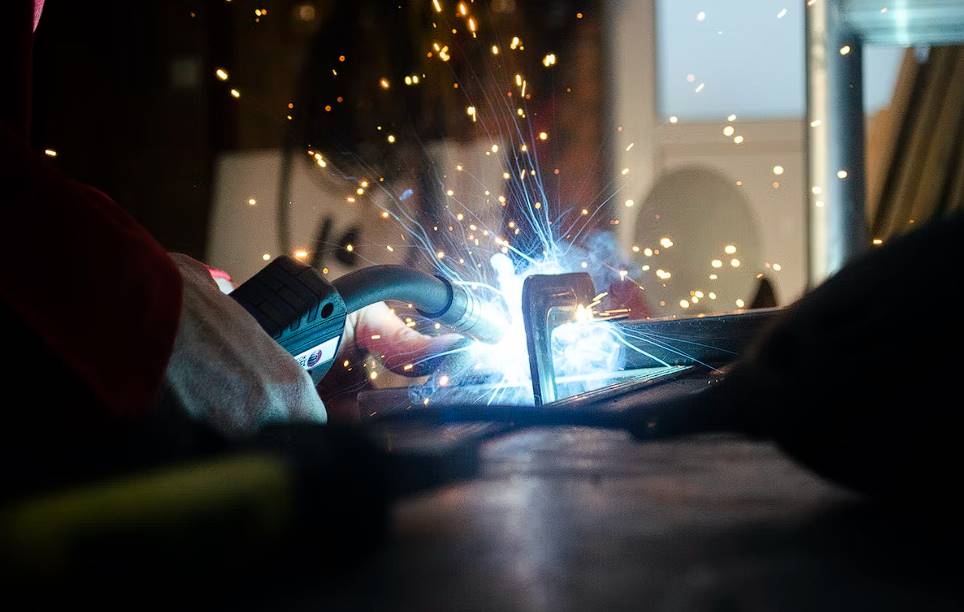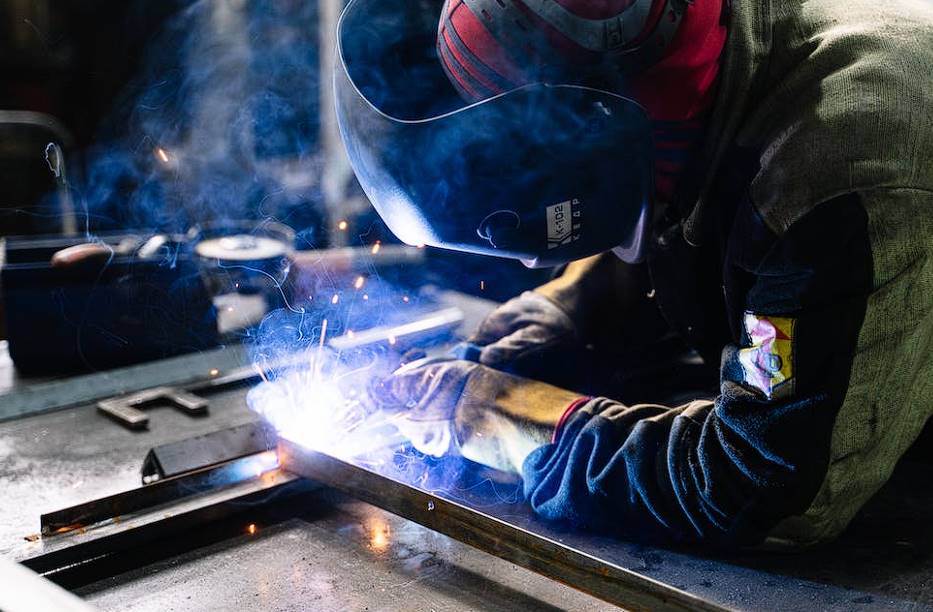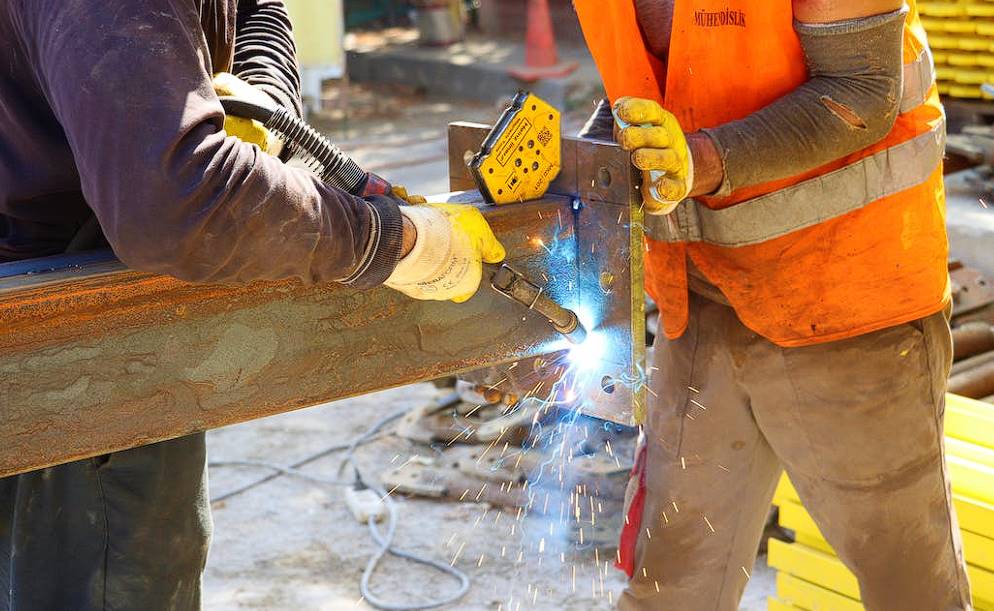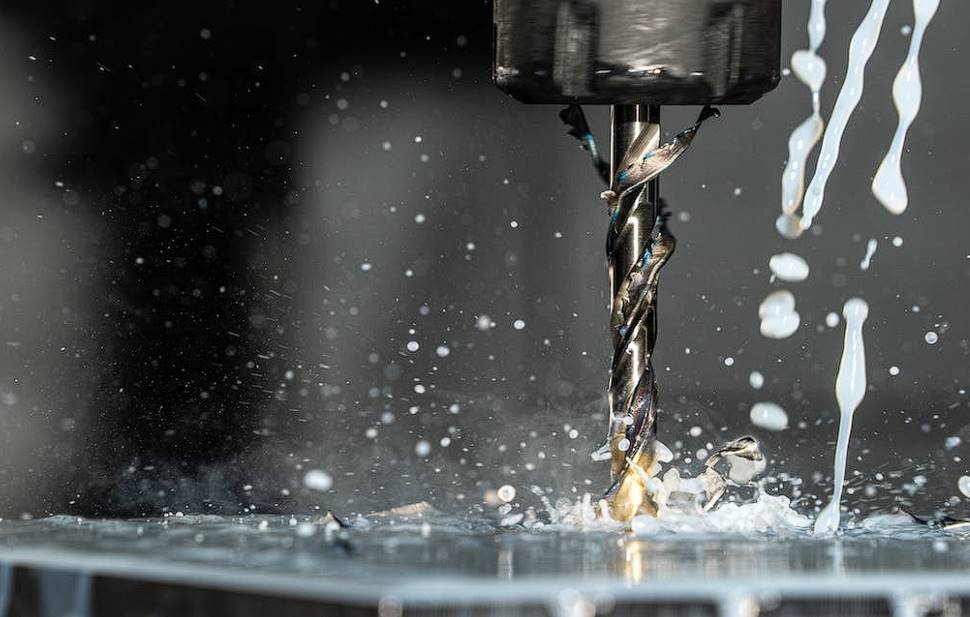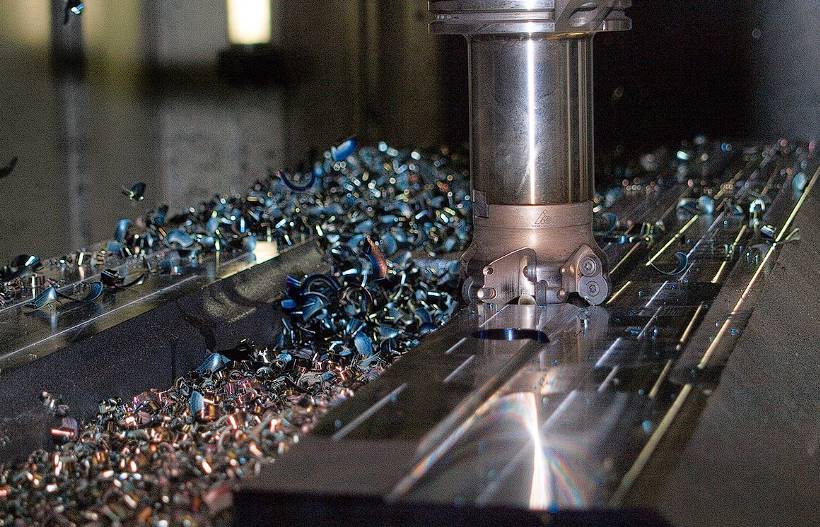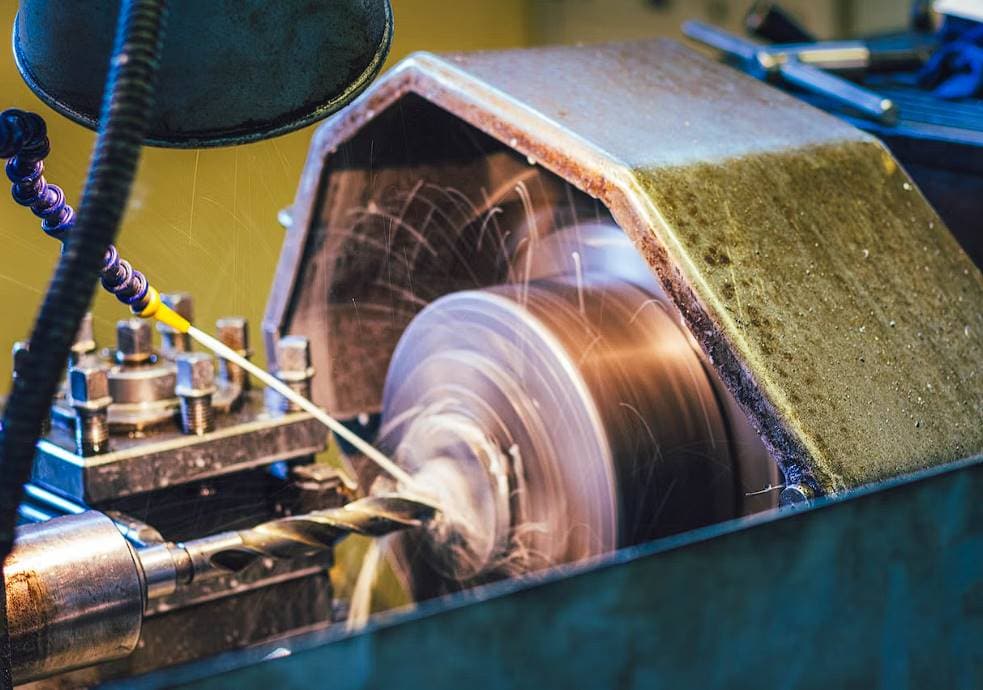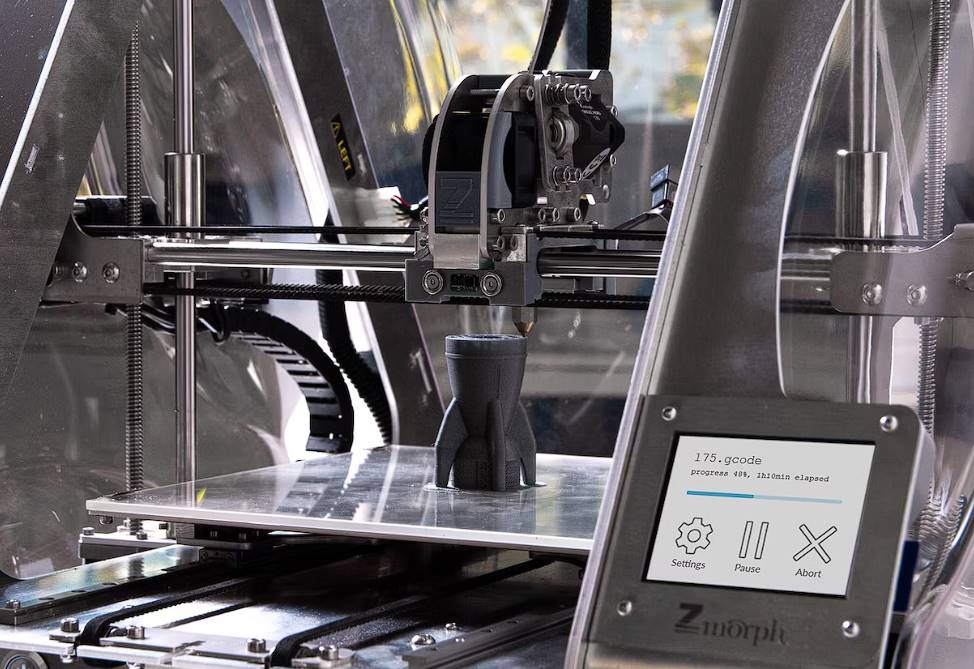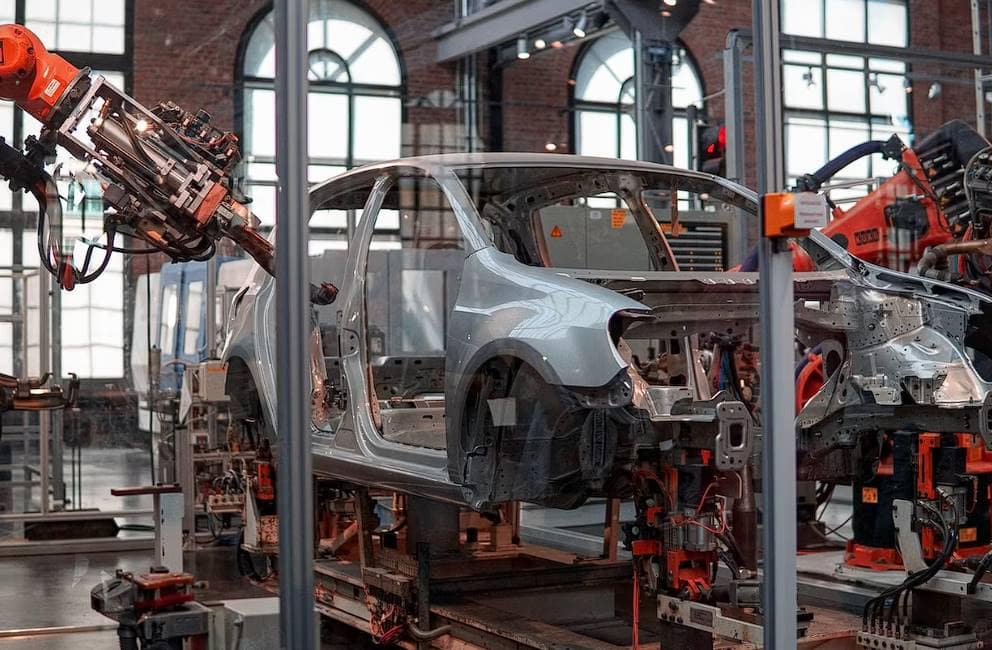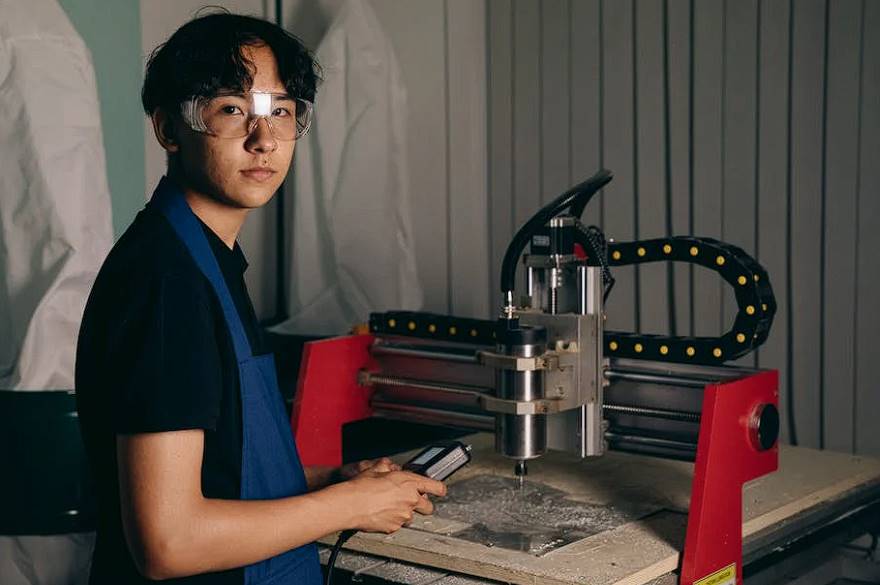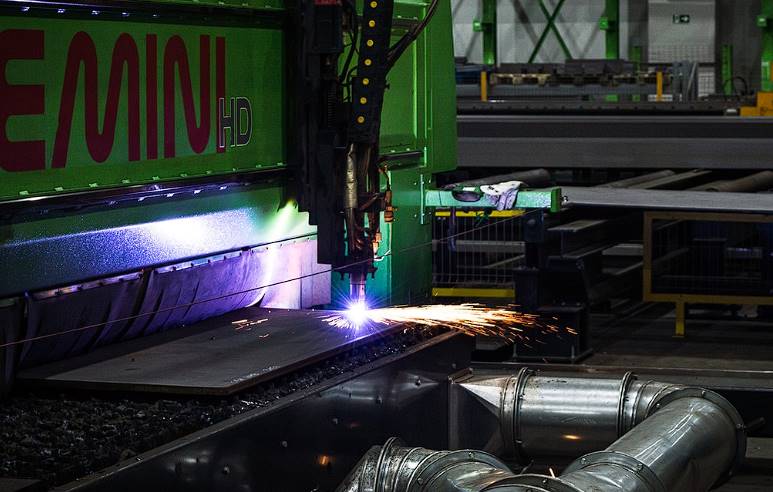This exciting trip shows the methods, technologies, and skilled work that go into making the essential parts that make metalworking machines work. From the rough sketches to the fine details, we'll look at the steps used to turn raw materials into the precise and long-lasting rollers needed to shape metal into things that are important to modern life.
Whether you're an experienced engineer, a would-be metalworker, or just interested in how things are made, this post will help you learn more about the creativity and careful attention to detail that goes into making these valuable tools. Come with us as we learn how to make metal rollers, which are an essential part of many businesses and will shape the future of manufacturing.
The Design Phase
The journey of manufacturing metal rollers begins long before any physical work is done, in a critical stage known as the design phase. This initial step is foundational, setting the stage for the metal rollers' functionality, durability, and efficiency. It involves a meticulous planning process, where every detail is considered to ensure the final product meets the specific needs of its application.
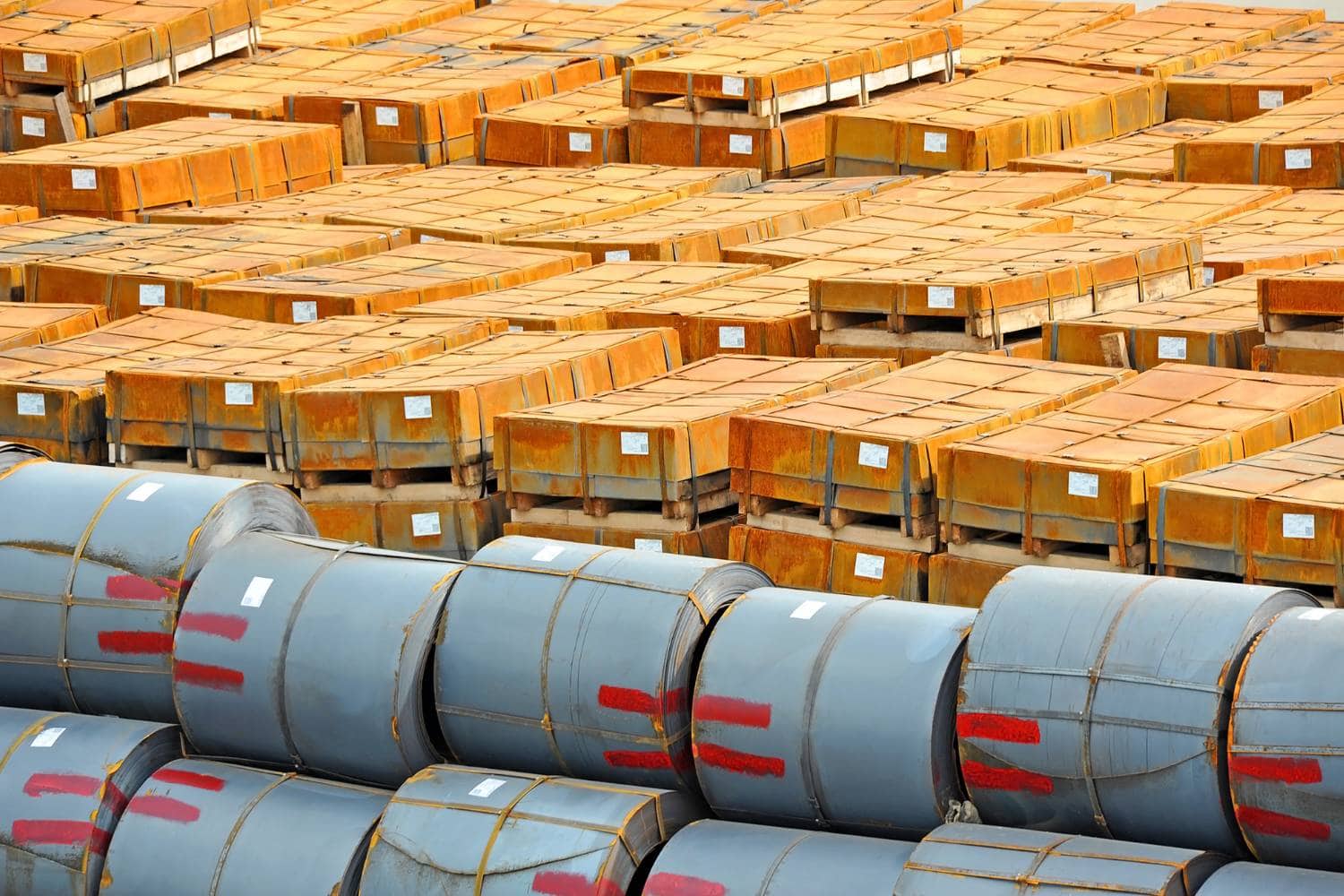
The Application
The first step in the design phase involves a thorough understanding of the application for which the roller will be used. Factors such as the type of metal to be rolled, the thickness of the material, the desired finish, and the environmental conditions in which the roller will operate are considered. This understanding dictates the overall design requirements, including dimensions, material choice, and surface treatment.
Material Selection
Choosing the suitable material for metal rollers is paramount. The material must withstand the stresses and strains of operation without deformation or failure. Common materials include high-grade steel, alloy compositions, and sometimes composite materials for specialised applications. The choice of material affects not only the roller's durability but also its performance in terms of heat resistance, corrosion resistance, and wear.
Precision Engineering And Design
With the application and materials defined, the next step is precision engineering. Designers and engineers use advanced software tools to accurately model the roller's dimensions and characteristics. This stage involves detailed calculations to ensure the roller can handle the load and pressure exerted during the metal forming process. Considerations include the roller's diameter, length, and the gap between rollers, which are critical for achieving the desired metal thickness and shape.
Surface Treatment And Finish
The design phase also encompasses decisions regarding the roller's surface treatment and finish, which is crucial for enhancing the roller's longevity and performance. Surface treatments include hardening processes, coatings to resist wear and corrosion, or textured finishes to influence the metal's final appearance. The choice of surface treatment is closely tied to the roller's material and the specific application requirements.
Prototyping And Testing
Although only sometimes feasible for every roller design, prototyping is an invaluable step in the design phase. Creating a prototype allows real-world testing and evaluation, providing insights into potential improvements or adjustments before full-scale production. This iterative process ensures the final design is optimised for performance and manufacturability.
Collaboration And Expertise
The design phase is highly collaborative, involving input from material scientists, mechanical engineers, and end-users. This multidisciplinary approach ensures that all aspects of the roller's design are considered, from material properties to manufacturing processes and final application. Leveraging expertise across fields leads to innovative solutions and advancements in roller design.
Material Selection
Creating metal rollers, integral to the metalworking industry, requires meticulous material selection to ensure durability, efficiency, and performance. This phase is critical, as the choice of material directly impacts the roller's ability to withstand operational stresses such as wear, corrosion, and deformation. Here's an in-depth exploration of how materials are selected for metal rollers, reflecting industry standards and innovative practices.
Understanding Operational Demands
The first step in material selection involves a thorough analysis of the roller's operational demands. This includes considering the type of metal the roller will process, the environment it will operate in (such as high temperatures or corrosive conditions), and the physical stresses it must endure. These factors are crucial in narrowing down the material choices to those best suited for the application.
High-Grade Steel And Alloys
High-grade steel is commonly selected for metal rollers due to its excellent strength, durability, and resistance to wear and deformation. Alloy steels, incorporating chromium, nickel, and molybdenum, offer enhanced properties for specific needs, such as increased hardness or corrosion resistance. The precise alloy composition can be tailored to meet the unique requirements of each roller application.
Advanced Composite Materials
Advanced composite materials are used in applications where traditional metals may not offer the desired performance. These composites can provide a unique combination of lightweight, high strength, and resistance to environmental factors. They are particularly useful in applications requiring high precision or reduced weight without sacrificing durability.
Surface Treatments And Coatings
Material selection also involves considering potential surface treatments and coatings to enhance the roller's performance. Hardening treatments can increase surface durability, while coatings like tungsten carbide or chromium offer improved wear resistance. These treatments are often crucial for extending the roller's life and maintaining optimal performance.
Evaluating Thermal Properties
The material's thermal properties are essential considerations, especially for rollers used in high-temperature environments or those involved in hot rolling processes. Materials must be chosen for their ability to maintain structural integrity and performance characteristics at the operating temperatures they will encounter.
Balancing Cost And Performance
Material selection balances cost and performance. While the ideal material may offer the highest durability and efficiency, cost constraints may necessitate a compromise. The goal is to select a material that meets the operational requirements at the most economical price point without compromising on quality or longevity.
Continuous Innovation
Material science is continuously evolving, offering new materials with enhanced properties. Staying informed about these innovations allows manufacturers to make better choices, improving roller design, efficiency, and overall performance.
The Manufacturing Process
Roll forming is a distinguished metalworking process that intricately shapes metal strips into specific profiles by sequentially bending them through a series of rolls. Each roller in the roll forming line meticulously manipulates the metal strip, gradually bending it to achieve the desired profile. This process, known for its precision and efficiency, caters to producing long, uniform products by bending a metal strip as it continuously passes through consecutive roll stands.
Historical Evolution And Principles
Roll forming was first invented as early as 600 BCE in the Middle East and South Asia, with significant advancements attributed to Leonardo da Vinci's innovative designs. The process underwent substantial technological evolution, notably with the advent of the steam engine, which significantly amplified production capabilities. Henry Cort's pioneering use of grooved rolls in the late 18th century marked a critical milestone, optimising the roll-forming process and setting the foundation for modern practices.
Technological Advancements In Roll Forming
Modern roll forming benefits from technological advancements such as Computer Numerical Control (CNC), Computer-Aided Design (CAD), and Programmable Logic Controllers (PLCs), which enhance precision, efficiency, and flexibility in production. These innovations allow for the creation of complex profiles and geometries, accommodating a wide array of metal types and thicknesses.
Applications And Materials
Roll forming's versatility is evident in its wide range of applications across various industries, from automotive and construction to aerospace and furniture. This process is adept at handling diverse materials, including carbon steel, stainless steel, aluminium, and copper, enabling the manufacture of products like panels, shelving, and structural components with exceptional dimensional accuracy and aesthetic qualities.
Hot Vs. Cold Rolling
The roll-forming process encompasses hot and cold rolling techniques, distinguished primarily by the metal being processed. Hot rolling is performed above the metal's recrystallisation temperature, which prevents work hardening and facilitates the shaping of larger sections. Cold rolling, performed below the recrystallisation temperature, is renowned for producing products with superior surface finishes, tighter tolerances, and enhanced strength through strain hardening.
The Future Of Roll Forming
As industries continue to demand higher precision, versatility, and efficiency, the roll-forming process is poised for further innovations. Advancements in automation, material science, and process control are expected to drive the development of even more sophisticated roll-forming techniques, enabling the production of metal components with unparalleled complexity and functionality.
Assembly And Installation
Metal rollers are pivotal in various industrial applications, from sheet metal forming to conveyor systems. The assembly and installation process of metal rollers can significantly influence the efficiency, functionality, and longevity of the machinery they are part of. This guide provides insights into metal roller assembly and installation procedures, combining expertise from leading sources in the field.
Metal Rollers
Metal rollers come in various types, including those used in roll-forming machines for metal roofing and ball rollers for material handling. Each type serves a specific function, from forming metal sheets into desired profiles to facilitating the smooth movement of materials across a surface. The application's specific requirements dictate the choice of roller type, whether for decorative purposes in metal roofing or operational efficiency in conveyance systems.
Roll Forming Machine Rollers
Rollers are intricately designed to bend metal strips into precise profiles incrementally in roll-forming machines. The assembly of these rollers requires meticulous placement within the machine to ensure each roller performs its part of the bending process accurately. The setup often involves a combination of top and bottom rollers, with the bottom rollers driving the metal strip and the top roller making adjustments to achieve the desired curve or angle. Advanced machines leverage CAD/CAM technology for precise roller configuration, reducing potential errors during production.
Ball Rollers For Material Handling
Ball rollers are essential components in material handling systems, enabling the smooth and efficient transfer of goods. These rollers are typically made from durable materials like stainless steel to withstand the demands of industrial environments. Installing ball rollers involves press-fit or screw-mount methods, ensuring they are securely attached to conveyors or material handling systems. Their design allows for multidirectional movement, making them versatile for various applications.

Rib Rollers In Metal Roofing
Rib rollers are used in portable roll-forming machines for metal roofing, adding structural ribs to metal panels. These ribs can serve both functional and decorative purposes, enhancing the stiffness of the panels and providing an aesthetic appeal. Rib rollers are distinct from the main forming rollers in a machine, and their installation is critical for achieving the desired rib pattern on metal roofing panels. Different rib roller types, such as bead, pencil, V-ribs, and striations, offer various styles for customisation.
Installation Procedures And Considerations
Installing metal rollers requires precision and attention to detail, whether in roll-forming machines or material-handling systems. Ensuring the rollers are aligned correctly is crucial for uniformly shaping metal profiles for roll-forming machines. In material handling applications, the placement and spacing of ball rollers impact the system's ability to transport materials efficiently.
Conclusion
Metal rollers are essential parts of modern life, and their manufacturing process begins with a critical design phase. This stage involves understanding the application, material selection, precision engineering, surface treatment, prototyping, and collaboration among material scientists, mechanical engineers, and end-users. The choice of material directly impacts the roller's ability to withstand operational stresses such as wear, corrosion, and deformation. Common materials include high-grade steel, alloy compositions, and composite materials for specialised applications.
Precision engineering uses advanced software tools to accurately model the roller's dimensions and characteristics, ensuring it can handle the load and pressure exerted during the metal forming process. Surface treatment and finish are also crucial for enhancing the roller's longevity and performance.
Prototyping is an invaluable step in the design phase. It allows for real-world testing and evaluation and provides insights into potential improvements or adjustments needed before full-scale production. Collaboration and expertise across fields lead to innovative solutions and advancements in roller design.
Material selection for metal rollers involves understanding operational demands and considering the type of metal, environment, and physical stresses it will face. High-grade steel and alloys are commonly selected due to their strength, durability, and resistance to wear and deformation. Advanced composite materials provide lightweight, high strength, and environmental resistance, which is particularly useful in applications requiring high precision or reduced weight without sacrificing durability. Surface treatments and coatings also significantly enhance the roller's performance.
The thermal properties of materials are crucial for rollers used in high-temperature environments or hot rolling processes. Material selection is a balance between cost and performance, and it is used to select a material that meets operational requirements at the most economical price point without compromising on quality or longevity. Material science is continuously evolving, offering new materials with enhanced properties.
Roll forming is a metalworking process that intricately shapes metal strips into specific profiles by sequentially bending them through a series of rolls. It has a history dating back to 600 BCE and has undergone significant technological advancements, including the advent of the steam engine. Modern roll forming benefits from technological advancements such as Computer Numerical Control (CNC), Computer-Aided Design (CAD), and Programmable Logic Controllers (PLCs), enhancing precision, efficiency, and flexibility in production.
The roll-forming process encompasses hot and cold rolling techniques, which are distinguished primarily by the metal's recrystallisation temperature. Hot rolling is performed above this temperature, while cold rolling is performed below it. Both techniques produce products with superior surface finishes, tighter tolerances, and enhanced strength through strain hardening.
The assembly and installation of metal rollers significantly influence the efficiency, functionality, and longevity of the machinery they are part of. Metal rollers come in various types, including those used in roll-forming machines for metal roofing and ball rollers for material handling. The choice of roller type depends on the application's specific requirements.
Content Summary
- The creation of metal rollers is a fascinating blend of industrial artistry and technical expertise.
- Metal rollers are essential components that drive the functionality of metalworking machines.
- The journey to manufacturing metal rollers starts with detailed planning in the design phase.
- Understanding the roller's application is crucial for determining design requirements.
- Material selection is paramount, impacting the roller's durability and performance.
- High-grade steel and alloys are typically chosen for their strength and resistance properties.
- Precision engineering involves using advanced software to model the roller's dimensions accurately.
- Surface treatments and finishes enhance the roller's longevity and operational performance.
- Prototyping allows for real-world testing and optimisation before full-scale production.
- Collaboration among experts across fields fosters innovative roller design solutions.
- The material selection phase is vital for ensuring the roller withstands operational demands.
- High-grade steel and specific alloys are preferred for their robustness and wear resistance.
- Advanced composite materials may be used for their unique properties in specific applications.
- Surface treatments and coatings are considered to improve the roller's wear resistance.
- Thermal properties of materials are crucial for rollers used in high-temperature processes.
- Balancing cost and performance is an essential aspect of material selection.
- Continuous innovation in materials science can lead to better roller designs.
- Roll forming is a precision process that shapes metal strips into specific profiles.
- The history of roll forming includes significant advancements dating back to 600 BCE.
- Modern roll forming benefits from technological advancements like CNC and CAD.
- The versatility of roll forming is evident in its wide range of applications across industries.
- The process includes both hot and cold rolling techniques for different outcomes.
- The future of roll forming looks promising, with potential innovations on the horizon.
- Assembly and installation of metal rollers are crucial for machinery efficiency and longevity.
- Different types of metal rollers serve specific functions in various industrial applications.
- Precision in assembly is required to ensure each roller performs its role effectively.
- Ball rollers facilitate the smooth movement of materials in material handling systems.
- Rib rollers add structural and decorative elements to metal panels in metal roofing.
- Installation procedures must be meticulously followed to achieve optimal roller alignment.
- The design phase lays the foundation for the roller's functionality and efficiency.
- A deep understanding of the roller's application influences the overall design.
- Material selection directly affects the roller's ability to endure operational stress.
- Precision engineering ensures the roller meets exact load and pressure requirements.
- Surface treatment choices are integral for improving the roller's performance and durability.
- Prototyping provides valuable insights for refining the roller design before mass production.
- Expert collaboration is critical to addressing all aspects of roller design comprehensively.
- Analysing operational demands guides the initial steps in material selection for rollers.
- Alloy steels are tailored to meet specific needs, such as increased hardness.
- Advanced composites offer performance advantages in precision or lightweight applications.
- Surface treatments and coatings are crucial for extending roller life and maintaining performance.
- Thermal properties influence the material choice for rollers used in hot rolling processes.
- The cost-performance balance is essential in selecting materials that meet budget and quality needs.
- Staying informed about material innovations can lead to improvements in roller designs.
- Roll forming intricately shapes metal with precision, shaping the future of manufacturing.
- Historical evolution highlights significant technological advancements in roll forming.
- Technological advancements enhance roll forming's precision, efficiency, and flexibility.
- Roll forming accommodates a broad array of materials, enabling diverse applications.
- The distinction between hot and cold rolling techniques affects the finished product's properties.
- Anticipation of future innovations in roll forming suggests advancements in manufacturing techniques.
- The assembly and installation of metal rollers underscore their importance in various industrial settings.
Frequently Asked Questions
The assembly begins with thoroughly understanding the roller's application and ensuring all materials and components, including the chosen metal, bearings, and any specific surface coatings, are ready and meet the required specifications.
Material selection is crucial because the rollers' durability, efficiency, and performance depend on their ability to withstand operational stresses, such as wear, corrosion, and deformation, without failing.
Technologies such as Computer Numerical Control (CNC), Computer-Aided Design (CAD), and Programmable Logic Controllers (PLCs) are employed to enhance precision, efficiency, and flexibility in production.
Surface treatments and finishes are determined based on the roller's material, application, and specific requirements, such as resistance to wear and corrosion or the need for a particular texture on the rolled metal.
Yes, prototyping is an invaluable step when feasible, as it allows for real-world testing and evaluation of the roller in its intended application, providing insights into potential improvements before full-scale production.


